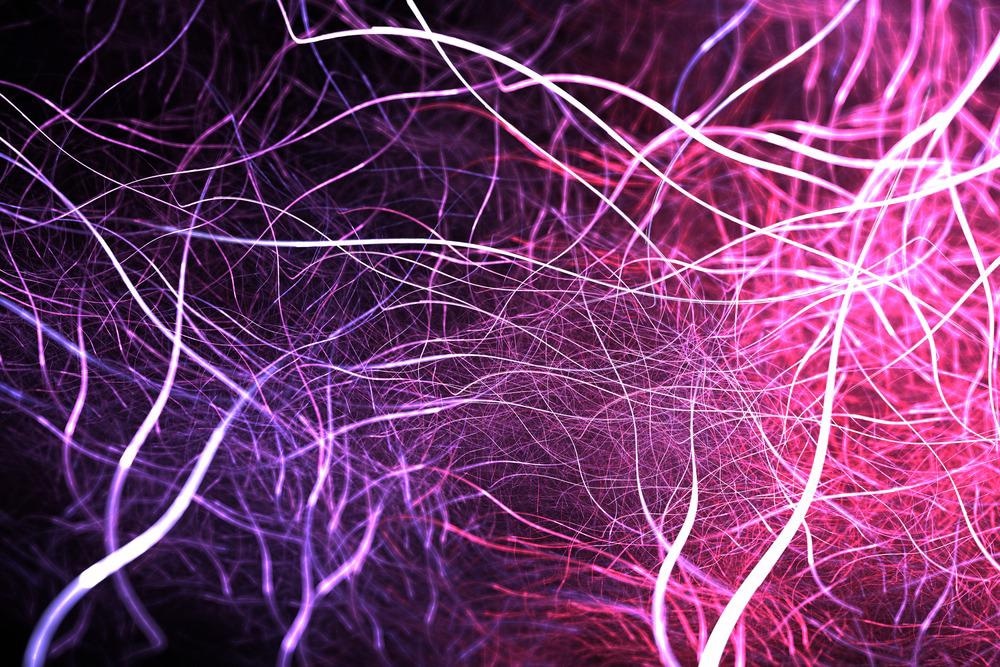Recently, researchers have modified the manufacturing process to fabricate nanofibers based on SF biopolymers derived from silk waste. This study is available in ACS Sustainable Chemistry and Engineering.

Study: Strengthened Silk-Fibroin/Poly(ethylene oxide) Nonwoven Nanofibers: A Dual Green Process Using Pure Water for Electrospinning and Electron Beam-Assisted Cross-Linking. Image Credit: Jurik Peter/Shutterstock.com
The development of scaffold materials, such as nanoporous and nanofibrous hydrogel for biomedical applications, using green processes is a desirable approach.
Natural biopolymers have been utilized for wound dressing, owing to their bioactive compounds content, mechanical properties, biodegradability, porosity, and proper surface chemistry.
What is Silk Waste?
Silk waste includes different types of raw silks that are unwindable. Even though the composition of silk waste is very much similar to that of good silk, it cannot be utilized for the production of silk textiles.
Typically, silk waste is composed of silk fibroin (SF) core polymer (75−83%) and a sericin glue-like protein as a coating (17−25%).
SF is a natural protein of semi-crystalline structure which provides robust stiffness and impressive strength to silk.
SF has been utilized in various healthcare and biomedical products because of its biodegradability, good mechanical property, biocompatibility with human tissue, flexible morphology, drug permeability, antioxidant and hypolipidemic properties, and nontoxicity.
The US Food and Drug Administration (FDA) has approved SF protein from Bombyx mori silkworm for biomedical purposes.
Production of Polymeric Nanofibers by Electrospinning Method
Electrospinning is one of the most popular, simple, and scalable techniques used for producing polymeric nanofibers used for wound dressing.
Scientists have found that binary blends of SF with other materials enhance the properties of resultant scaffolds, due to the synergistic influence of both components.
Interestingly, the physiochemical properties of nanofibers can be controlled by optimizing the electrospinning parameters to attain the requirements of specific applications.
Typically, organic solvents are used in the electrospinning process due to their high dipole moment, conductivity, dielectric constant, and low surface tension. However, the majority of the organic solvents, such as dichloromethane, formic acid, and hexafluoroisopropanol (HFIP), are toxic.
Very few reports are available on the production of SF nanofiber materials via electrospinning process based on SF/poly(vinyl alcohol) (PVA) and SF/ poly(ethylene oxide) (PEO) in water and water/methanol systems.
However, scientists reported that the fabricated SF nanofibers are sensitive to moisture and can dissolve in the biological system before utilization.
Development of Strong Silk-Fibroin/Poly(ethylene oxide) Non-woven Nanofibers - A New Study
Generally, electrospun processes require some additives to stabilize the nanofibers after their synthesis. However, previous studies have indicated that these additives account for biological risks when used for biomedical purposes.
The new study reported on the development of an additive-free system that involves partial evaporation of the initial solving agent, which is followed by methanolic treatment to enhance the structural morphology.
The additive-free system also aids in improving the mechanical properties of the fabricated nanofibers.
Cross-linking techniques enable the nanofibrous materials to maintain the porosity and stability of the structure.
The radiation-induced crosslinking technique is known to be a green process for the production of hydrogel or scaffold. This is because the entire process, i.e., from the sample preparation to processing, is performed under liquid or solid-state.
The irradiation method utilizes γ-rays or electron beams (EBs) for sterilization of biomedical materials and production hydrogels with wide-ranging applications.
In the new study, scientists explored a dual green route to obtain strengthened SF-based nonwoven nanofibers using pure water for electrospinning and EB-assisted cross-linking technique.
For the fabrication of SF-PEO nanofibers, scientists primarily optimized the electrospinning process using SF/poly(PEO) in a pure water solution for the production of non-woven nanofibers.
Secondly, they focussed on stabilizing the dissoluble SF/ PEO non-woven nanofibers via cross-linking networks developed by a free radical reaction using EB irradiation.
Scientists revealed that this newly designed process lead to the production of cylindrical-shaped, smooth, and elongated SF-PEO nanofibers with a diameter of 169 ± 5 nm, under moderate conditions.
To achieve maximum stability in the fabricated nanofibers, the authors optimized the EB irradiation dose to be 25 kGy for cross-linking, and ~50% gel fraction.
The optimized conditions significantly improved the mechanical properties of the SF/PEO nanofiber.
The tensile strength and elongation at break were augmented and the ductility was increased approximately 22-fold.
Benefits of Silk-Fibroin/Poly(ethylene oxide) Non-woven Nanofibers
The authors reported that cross-linked SF/PEO nanofibers supported cell proliferation and were found to be non-toxic to skin fibroblast cells.
This strongly implies that this nanofiber material could be used for healthcare and biomedical purposes.
One of the important contributions of this study has been the utilization of the 3G strategy, i.e., green electrospinning, green EB irradiation process, and green renewable polymers (silk waste), for the production of non-toxic, strong, stable nanofibers, ideal for wound dressings.
Additionally, the swelling and water absorption property of the SF-PEO nanofiber could be utilized for drug entrapment and controlled release application.
Hairy Nanoparticles: What and Why?
Reference
Wongkrongsak, S. et al. (2022) Strengthened Silk-Fibroin/Poly(ethylene oxide) Nonwoven Nanofibers: A Dual Green Process Using Pure Water for Electrospinning and Electron Beam-Assisted Cross-Linking. ACS Sustainable Chemistry and Engineering. Available at: https://doi.org/10.1021/acssuschemeng.1c06965
Disclaimer: The views expressed here are those of the author expressed in their private capacity and do not necessarily represent the views of AZoM.com Limited T/A AZoNetwork the owner and operator of this website. This disclaimer forms part of the Terms and conditions of use of this website.